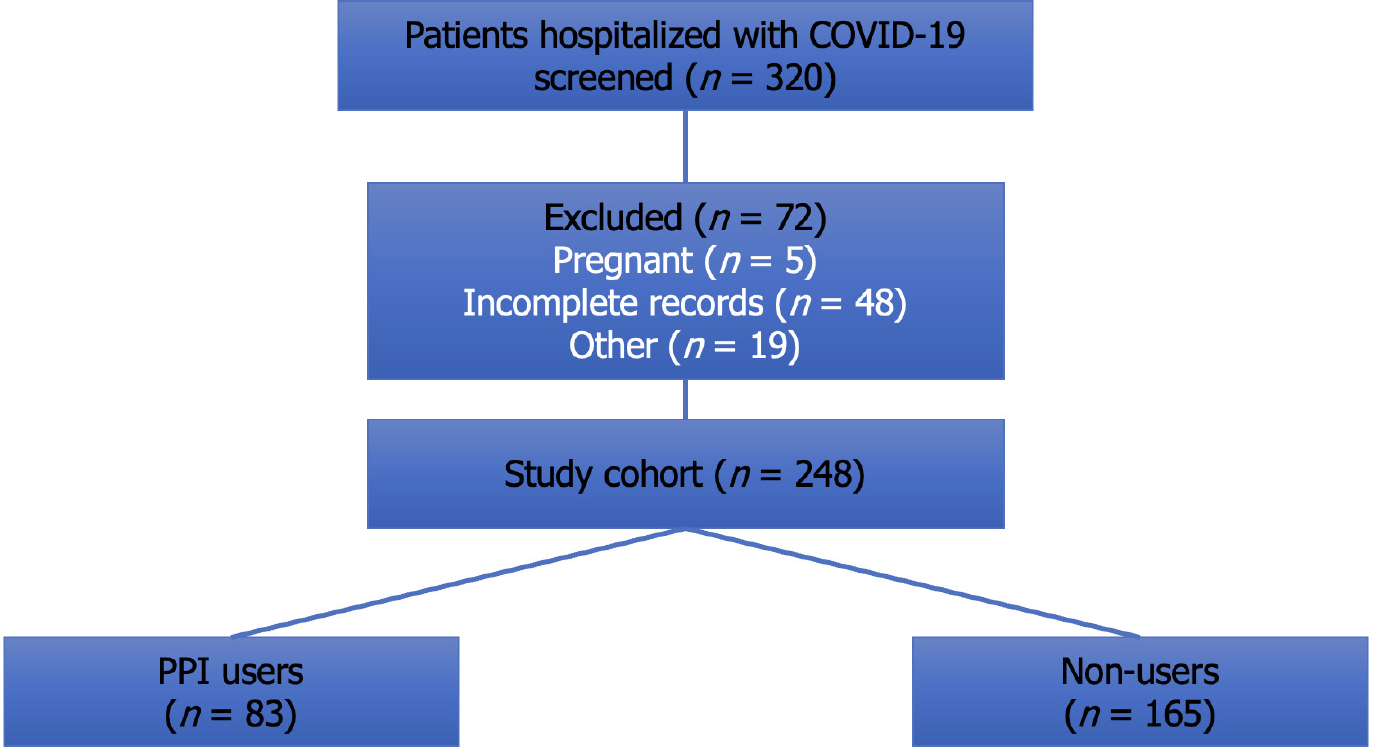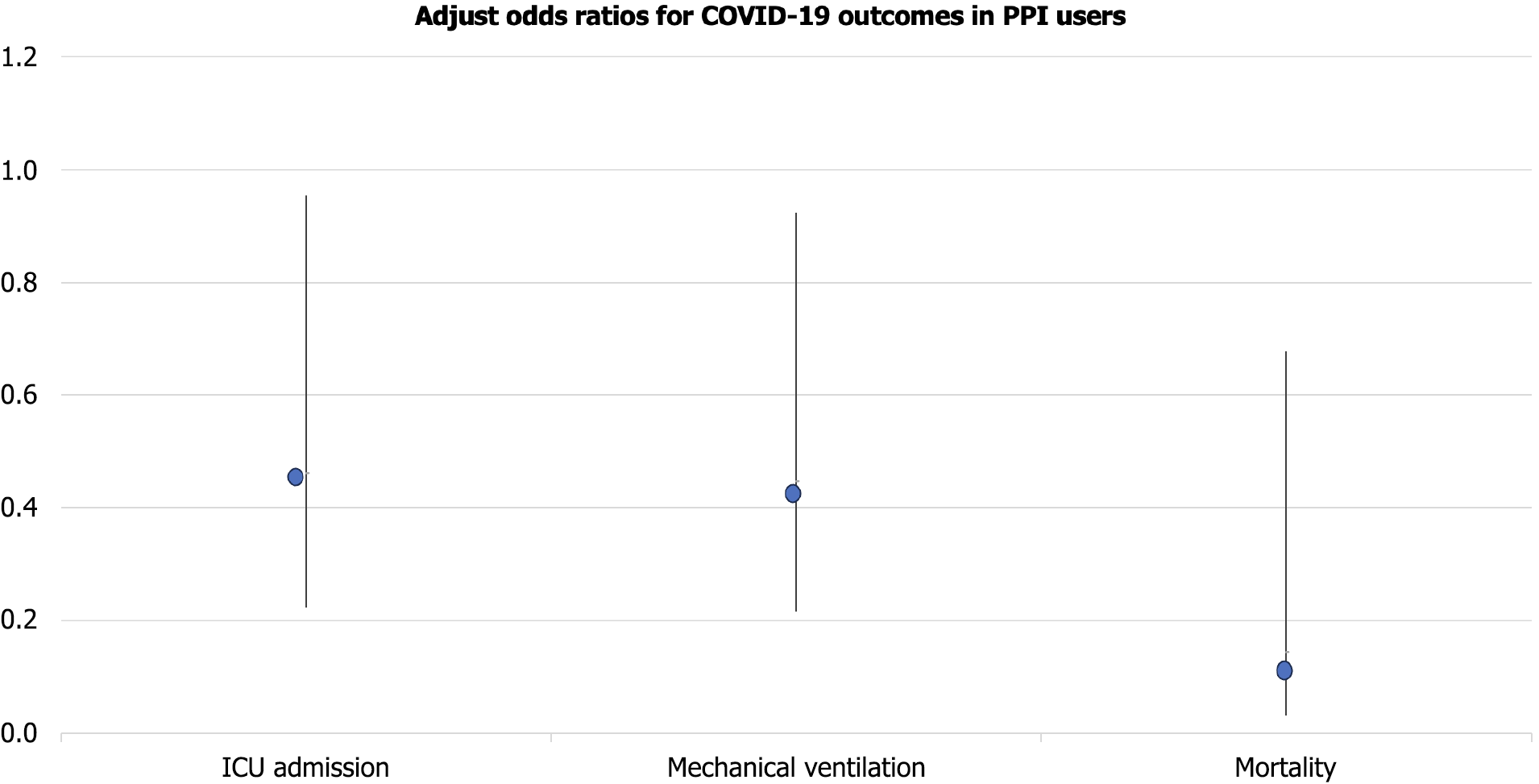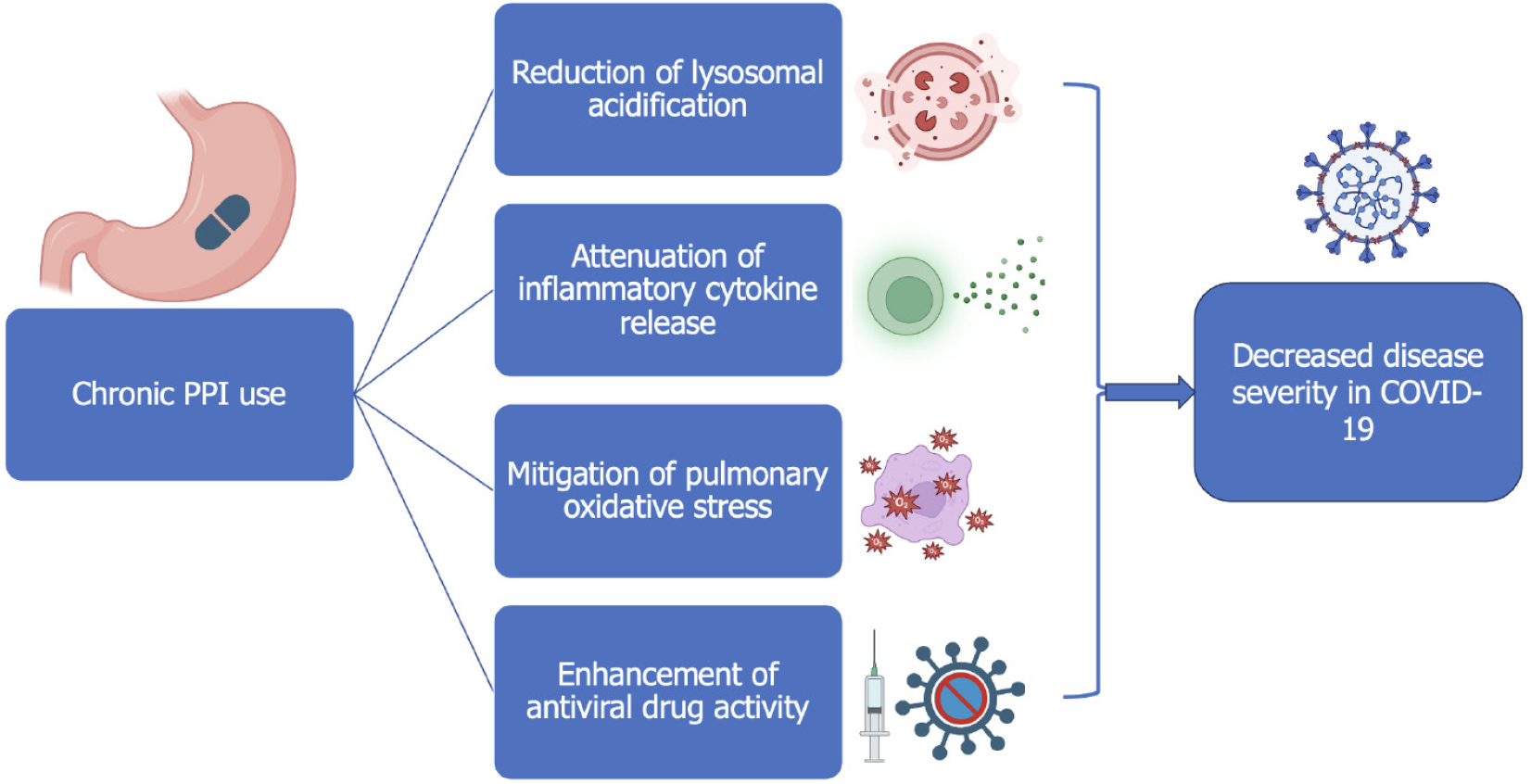Copyright
©The Author(s) 2025.
World J Virol. Sep 25, 2025; 14(3): 109170
Published online Sep 25, 2025. doi: 10.5501/wjv.v14.i3.109170
Published online Sep 25, 2025. doi: 10.5501/wjv.v14.i3.109170
Figure 1 Cohort flow diagram: Flowchart illustrating the selection of patients for inclusion in the study.
Out of 320 patients screened, 248 were eligible based on confirmed severe acute respiratory syndrome coronavirus 2 infection and availability of complete clinical data. Patients were stratified into pre-hospital proton pump inhibitor users (n = 83) and non-users (n = 165) for outcome comparison.
Figure 2 Forest plot of adjusted odds ratios for coronavirus disease 2019 outcomes: Forest plot depicting adjusted odds ratios and 95% confidence intervals for intensive care unit admission, mechanical ventilation, and in-hospital mortality among proton pump inhibitors users compared to non-users.
Proton pump inhibitors use was independently associated with a significant reduction in severe outcomes. COVID-19: Coronavirus disease 2019; PPI: Proton pump inhibitor.
Figure 3 Proposed mechanistic pathways of proton pump inhibitors in coronavirus disease 2019: Illustration hypothesizing the potential biological effects of chronic proton pump inhibitor use in coronavirus disease 2019.
Mechanisms include reduction of lysosomal acidification, attenuation of inflammatory cytokine release, mitigation of pulmonary oxidative stress, and enhancement of antiviral drug activity, ultimately leading to decreased disease severity. PPI: Proton pump inhibitors; COVID-19: Coronavirus disease 2019.
- Citation: Shanmugavel Geetha H, Prabhu S, Suresh MG, Abraham GM, Sekar A, Mohamed S, Sekar A, Hatwal J, Sohal A, Batta A. Pre-hospital proton pump inhibitor use and clinical outcomes in hospitalized COVID-19 patients: A retrospective case-control study. World J Virol 2025; 14(3): 109170
- URL: https://www.wjgnet.com/2220-3249/full/v14/i3/109170.htm
- DOI: https://dx.doi.org/10.5501/wjv.v14.i3.109170















